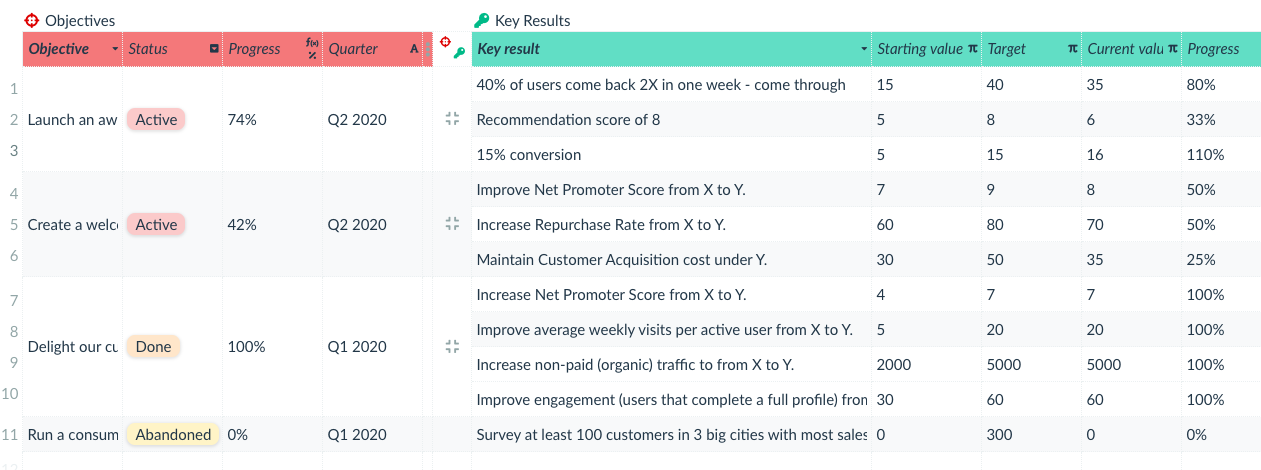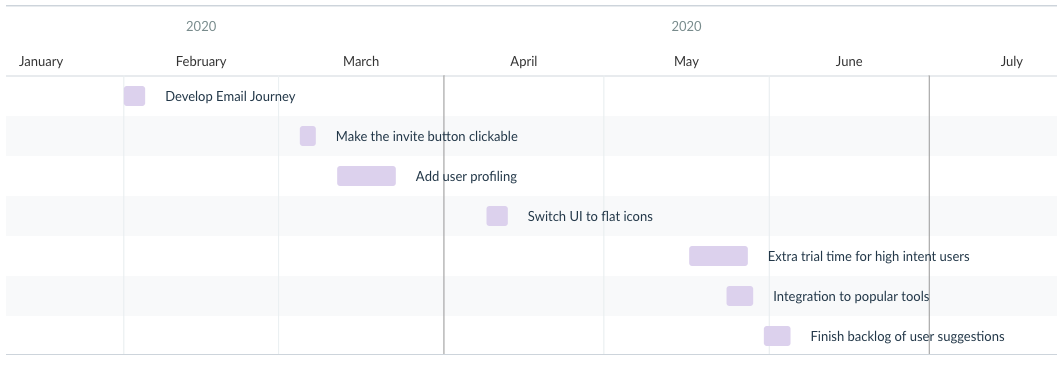How to track OKR – 3 steps to achieve your goals

Every organization, small or big, has to make sure that everybody is on the same track in order to reach their goals. Vision needs to be mapped to strategy and strategy to concrete goals which everybody inside the organization is aware of. OKR (or OKRs, stands for Objectives and Key results) is a simple tool to create alignment and engagement around measurable goals. Why do we need it and how to track OKR?
Employees are probably more valuable when their mission is focused.
Sundar Piachi, Google CEO
If you want to reach your goals, you must know what those goals are. Your teammates or employees must also know what they are trying to achieve, so that they can work towards it. OKR provides a framework just for that. It includes setting, tracking and evaluating the goals, all done frequently on a monthly or quarterly basis.
There are a number of large companies (e.g. Google) that successfully use OKR to navigate their growth. To make OKR work for you and your organization, you should perform the following three steps.
Time needed: 2 hours
How To Track OKR?
- Define your Objectives and Key results
Objectives are qualitative descriptions of what you try to achieve. Key Results are metrics showing your progress towards Objectives.

- Make your OKR transparent (or How to track OKR)
Share them with your employees and co-workers, so that they can actively participate in achieving them. Make sure that everybody can see the current status and track the OKR.

- Work towards achieving your OKR
Don’t forget to evaluate your achievements and progress regularly to see if there is enough time to complete. Communicate any risks in advance.

Define your Objectives and Key results
The main idea of the OKR framework is that you set:
- a goal (objective) that you want to meet
- a list of key results which must be achieved to meet the goal
How to define objectives
An objective should be a qualitative description of what you are trying to achieve. It should be short, engaging and ambitious.
Your goal is not to meet your objectives 100% of the time. Google recommends 60-70% as an optimum. (Maybe you ask how to know if you met 70% of a qualitative objective – we answer that below in a section about grading.)

If you only think of what you can 100% achieve, you might be setting a goal that is not ambitious enough.
Just trying to reach the ambitious goal will make you go out of your comfort zone and get further – and that counts as a success too! This is how to track OKR in a way that leads to exceptional results.
An example of the objective might be “Launch an awesome MVP”.
Is it short? Yes.
Is it engaging? Yes.
Is it ambitious? Yes.
But how would you know that you have created an awesome MVP? Or that you were 70% successful? This is where the key results step in.
How to define key results
Key results are metrics that measure your progress towards reaching the objective.
If it does not have a number, it is not a Key Result.
Marissa Meyer, former Google VP
The most important attribute of a key result is that it is measurable.
Usually one key result is not enough to measure the success of the objective, therefore you should define at least two. On the other side, setting too many key results creates distraction – take five as an upper bound.
“Get a lot of returning users” is not a good example of a key result, as it is hard to tell if the key result was achieved.
“Get most of users to come back 2x in one week” is better because it defines what “returning user” means, but it still misses a definition of the number of users.
“Get 40% of users to come back 2x in one week” is a perfectly clear and measurable key result.
Initiatives are the third concept which some organizations use within the OKR framework. They represent concrete tasks or actions steps towards achieving the key result.
How to grade objectives
You obviously can’t grade the objective just by guessing your success rate, but fortunately you have the key results!
So, if your key result is “Get most of users to come back 2x in one week” and you get 30% users to come back two times in one week, then your key result grade is 75%.
The objective grade is an average of its key results grades.
For example, if your other key results have grades 50% and 90%, then your objective grade is (75% + 50% + 90%) / 3 = 72%.
Make your OKR transparent (How to track OKR)
The second step is to go out with your OKR. Share them with your employees and co-workers, so that they can actively participate in achieving them. Make sure that everybody can see the current status and track the OKR.
Lumeer’s OKRs template helps you to track OKR:
Save and connect the data
The structure of the tables and links between them mirror the real connections of objectives, key results, initiatives and people responsible for the initiatives.

Key results are connected to their objectives:

In the same way, initiatives are connected to their key results:

Offer different perspectives and reports
See the progress of key result grouped by objectives in a chart:

Track the initiatives on a timeline:

Or create a summary employee initiatives report:

Automate the calculations
Whenever you see a small “f(x)” symbol, it means that the calculation in the column is automated with a function. You don’t need to set the function for every cell, there is only one function for all cells in the column.
For example, key result’s Progress is calculated from Start, Target and State values:

Same applies to objective’s Progress that is calculated from its key results’ progress.

That means that you don’t have to watch and manually update progress values: by updating the State of the key result, both Progress values are updated automatically!
Work towards achieving your OKR
After you set the OKR, well, there is nothing less to do than to work on them – which only you have the knowledge and expertise to do!
Don’t forget to evaluate your achievements at the end of the quarter (or other timespan that you have chosen).



